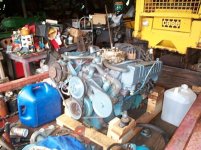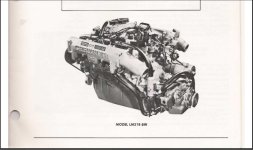politicallycorrectcraft
Member
Ok, We've sorted out the riser gaskets. Thanks again Jeff. Now we are working out where the plumbing should go on our new engine. According to the osco book,Since my engine will sit at downward angle I should feed the exhaust manifolds from the the underside in the rear of the manifolds. This will push water forward in the lower part up to the front of the manifold and up and out via the copper tubes. This will require me to add a nipple in rear port in the manifold and add block of plates on the front of the manifolds. I have two sets of manifolds and all the hardware required. It is evident to me by the rust on the front of the manifolds that it was getting a lot hotter up there and was not cooling properly. So my question is how to run hoses to the back of the manifolds. The current setup has two hoses coming from the topside of the thermostat running the front plates of the manifolds. should I run hoses from the thermostat to the rear of the manifolds? Seems like a weird bend for the hoses. Does anybody have any pics of a setup feeding the manifolds from the underside in the rear?




